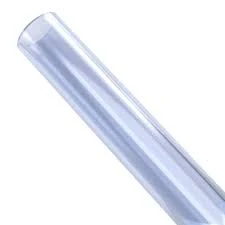Nov . 25, 2024 00:21 Back to list
Understanding the Applications and Benefits of PP Welding Rods in Industry
An Overview of PP Welding Rods in Plastic Fabrication
PP (polypropylene) welding rods have become increasingly popular in the plastic fabrication industry due to their versatility, durability, and excellent bonding properties. These rods are primarily used for welding polypropylene and other thermoplastic materials, making them an essential tool for manufacturers and repair specialists alike.
Polypropylene is a thermoplastic polymer that is known for its high chemical resistance, lightweight nature, and resilience. These properties make it ideal for various applications, from automotive components to household items. However, in situations where plastic components need to be joined or repaired, the effective use of welding rods is paramount.
An Overview of PP Welding Rods in Plastic Fabrication
One of the key advantages of using PP welding rods is their compatibility with a variety of welding techniques, including hot air welding, extrusion welding, and injection molding. Hot air welding is especially popular for repairing and joining polypropylene sheets and components. During this process, hot air is directed at the joint of the two pieces, while the PP welding rod is introduced into the molten area, creating a strong bond as it cools.
pp welding rod

Moreover, PP welding rods provide a strong, lasting bond that is resistant to impacts and weathering. This makes them ideal for outdoor applications, such as welding tanks, chemical containers, and outdoor signage. Their resistance to moisture and chemicals ensures that the welds will maintain their integrity even in challenging environments.
In addition to their practical applications, the use of PP welding rods also promotes sustainability. Many manufacturers are increasingly focusing on recycling polypropylene materials, and the ability to efficiently weld and repair these materials supports a circular economy. By extending the life of plastic products through effective welding, businesses can reduce waste and contribute positively to environmental efforts.
However, users should be aware of the importance of proper technique when working with PP welding rods. Preparation is crucial; surfaces must be clean and free from contaminants to achieve the best results. Furthermore, controlling the heat during the welding process is vital to avoid damaging the base materials.
In conclusion, PP welding rods are an invaluable asset in the field of plastic fabrication. With their excellent bonding properties, versatility, and compatibility with various welding techniques, they are well-suited for a wide range of applications. As industries continue to prioritize sustainability, the use of these rods not only provides functional benefits but also supports responsible practices in material usage. Whether for manufacturing or repair, PP welding rods represent a smart choice for anyone working with polypropylene and other thermoplastics.
-
PP U-channel: Chemical-Resistant, Lightweight & Durable
NewsAug.10,2025
-
Transparent PVC Pipe: Clear Flexible Tubing for Fluids
NewsAug.09,2025
-
Durable PP Rigid Sheet: Versatile & High-Quality Plastic Panels
NewsAug.08,2025
-
Premium Glossy PP Rigid Sheet – Durable & Versatile
NewsAug.07,2025
-
High-Quality HDPE Sheet | Durable Plastic Panels
NewsAug.06,2025
-
High-Precision PVC Rigid Sheets for Vacuum Forming | AI-Optimized
NewsAug.05,2025

